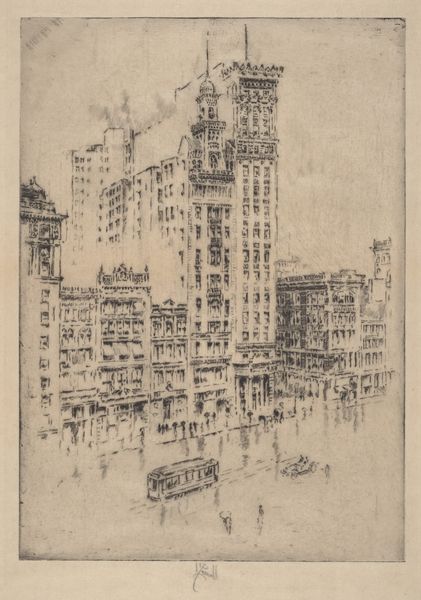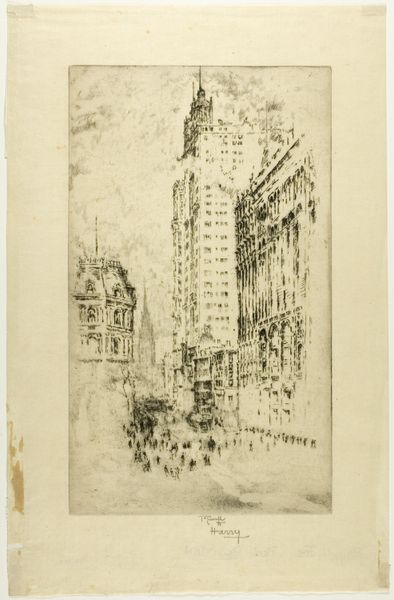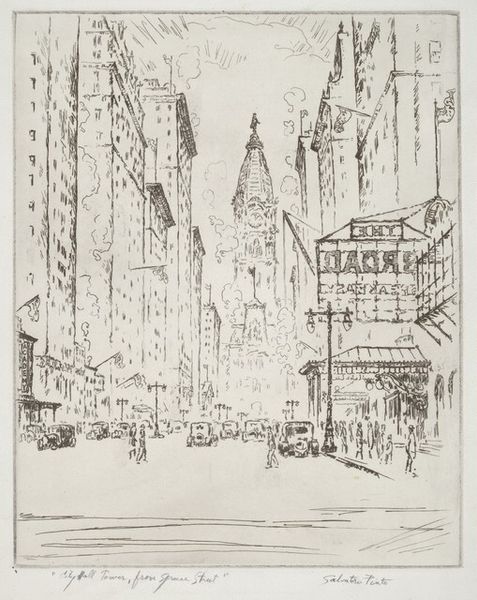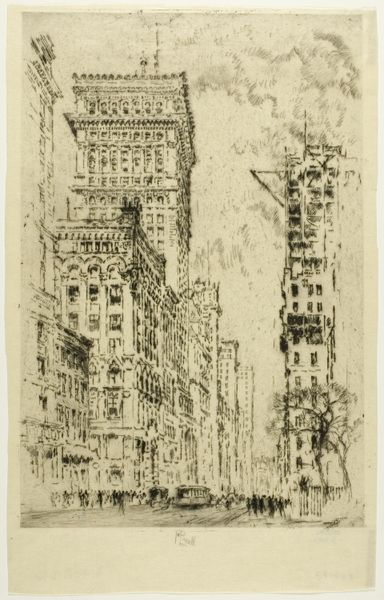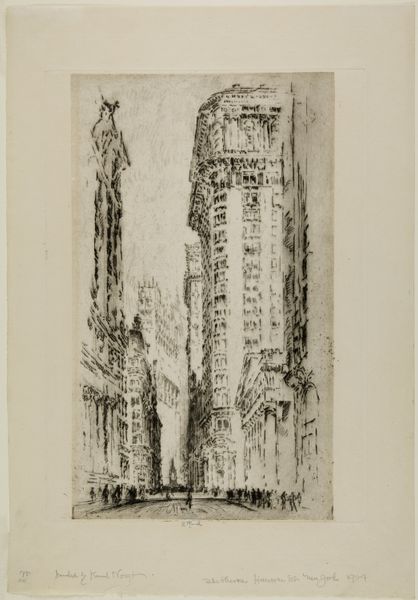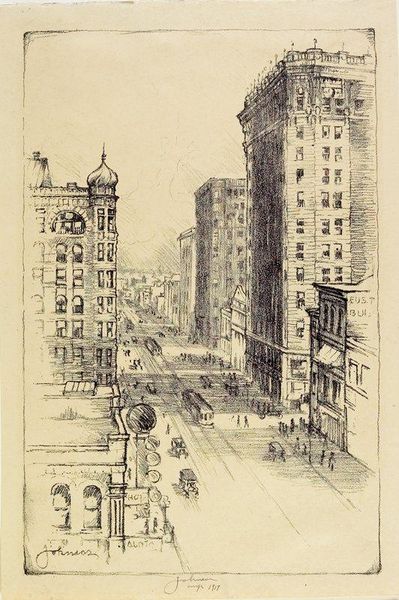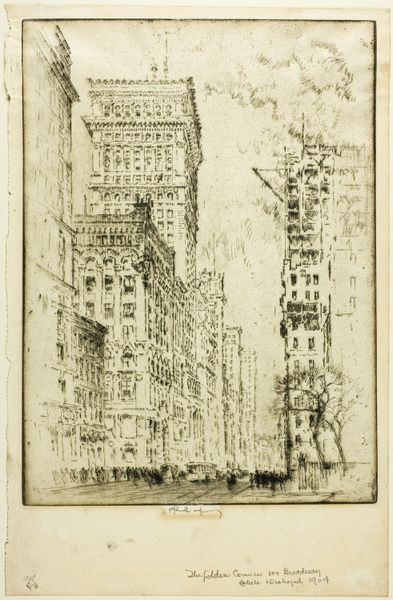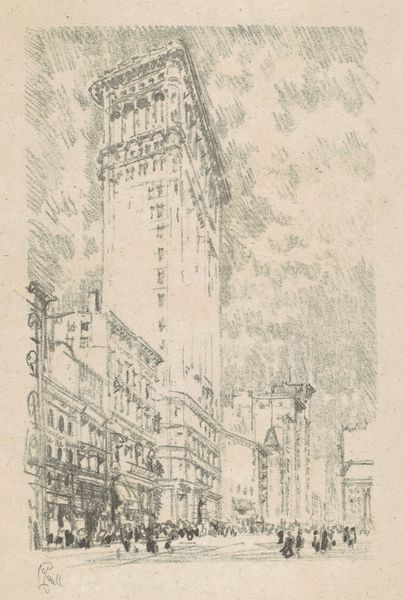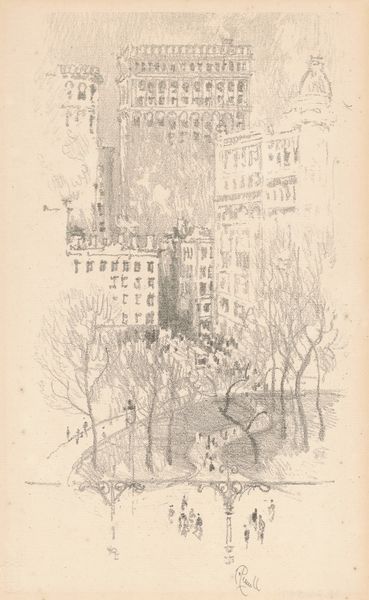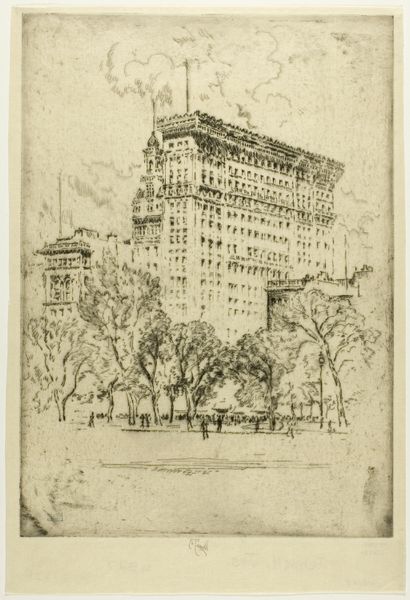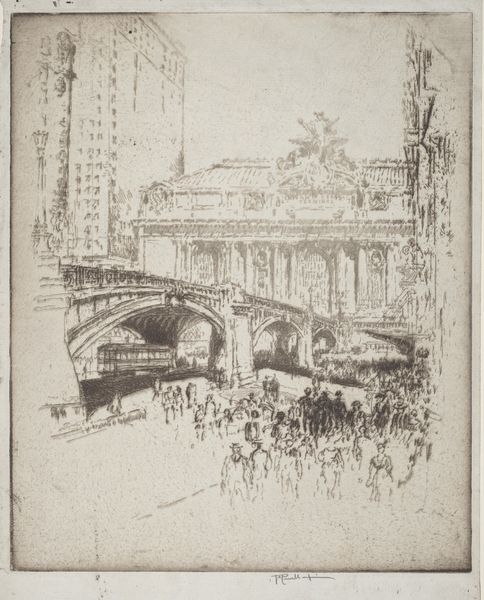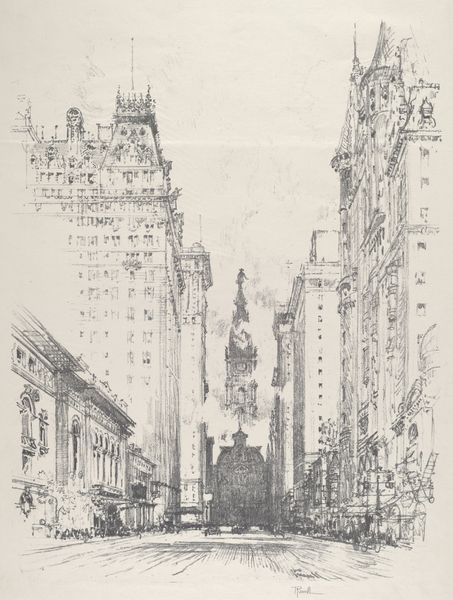
Dimensions: 300 × 213 mm (image); 3w28 × 228 mm (sheet)
Copyright: Public Domain
Editor: Here we have Joseph Pennell's "Times Building and 42nd Street," an etching made with graphite on paper from 1904. It has a kind of hurried, transient feel to it. What do you see in this piece? Curator: Pennell’s choice to depict this scene in 1904 is significant. It's the height of the City Beautiful movement, a progressive era attempt to impose order and grandeur on rapidly industrializing urban spaces. This image, however, seems ambivalent, almost skeptical. What commentary do you think Pennell makes by rendering this 'beautiful' city in such a gritty medium? Editor: I suppose the stark contrast with the grand ideals of the City Beautiful movement becomes clearer. It shows the unglamorous reality beneath the surface, the crowded streets and imposing buildings. Curator: Exactly! And consider who this “beauty” was intended for. Whose voices were amplified in the design of these spaces, and whose were silenced or marginalized? Look at the composition; who occupies the foreground, who’s in the background? The architectural ambition here feels almost… oppressive. What do you make of that contrast between the organic shape of the bare tree versus the very rigid architecture? Editor: The tree adds a layer of tension. It softens the scene a little, yet also looks somewhat out of place, as if nature is struggling to coexist with the city's artificial landscape. I wonder what impact he was seeking with the bareness, suggesting winter. Curator: Perhaps to subtly highlight themes of displacement, of nature and people alike struggling within these constructed environments. Thinking about intersectionality – how did race, class, and gender shape one’s experience of 42nd Street in 1904? This artwork opens up some really important avenues for exploring power and representation. Editor: It really changes the way I view not just the artwork but also the world it represents. Curator: Indeed. By analyzing art within its historical and social contexts, we can begin to deconstruct the narratives embedded within the structures and challenge existing power dynamics.
Comments
No comments
Be the first to comment and join the conversation on the ultimate creative platform.
